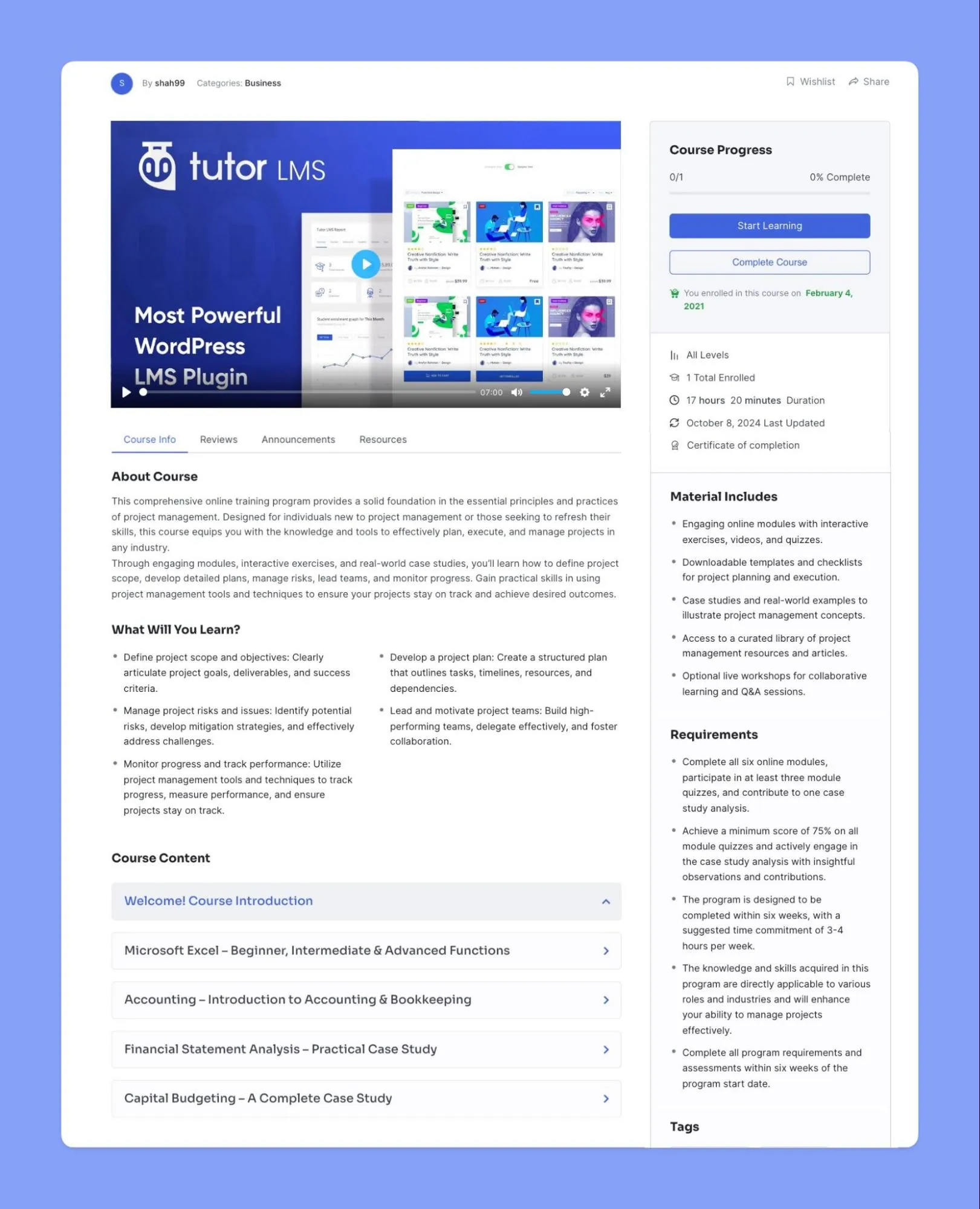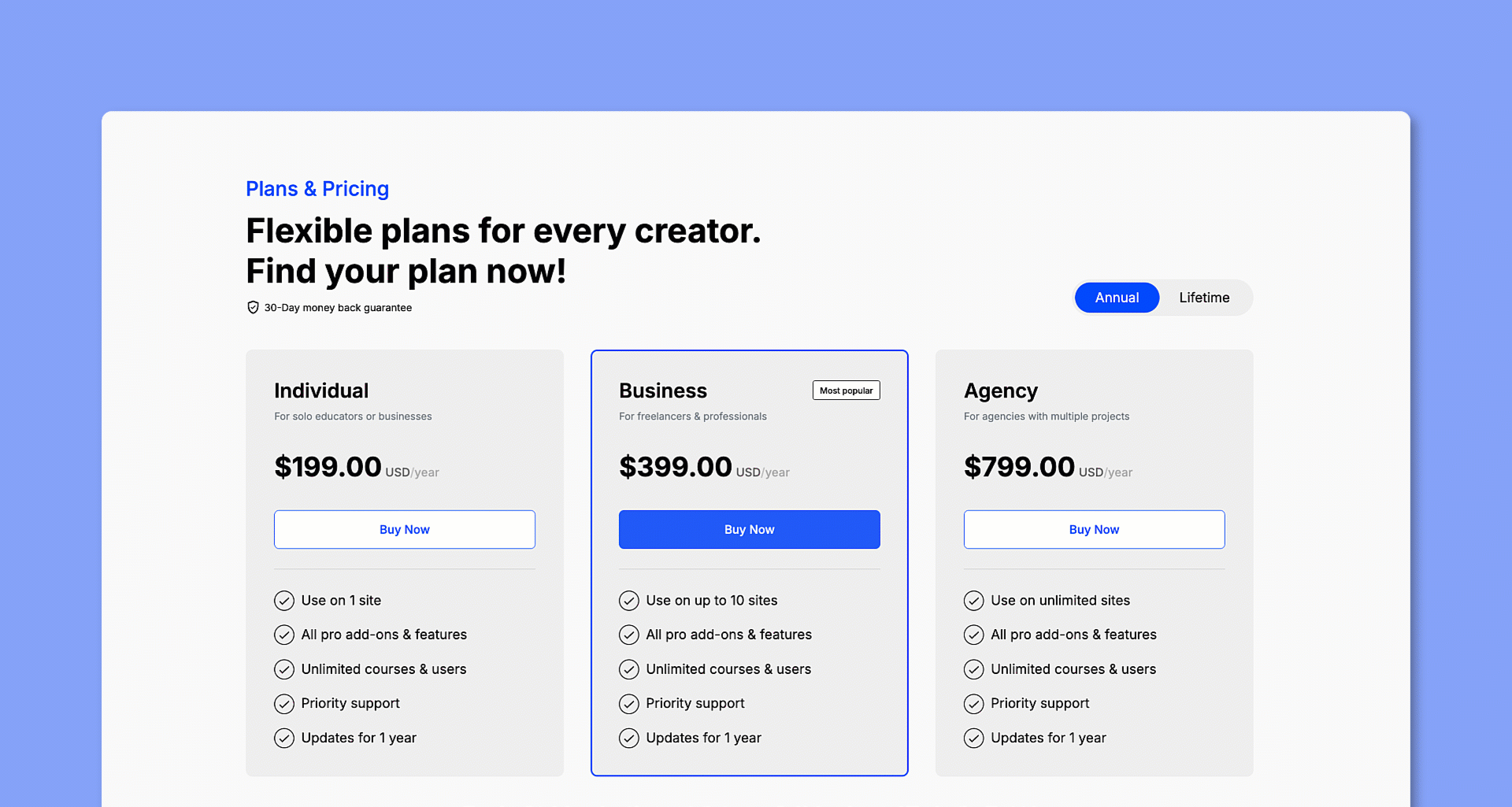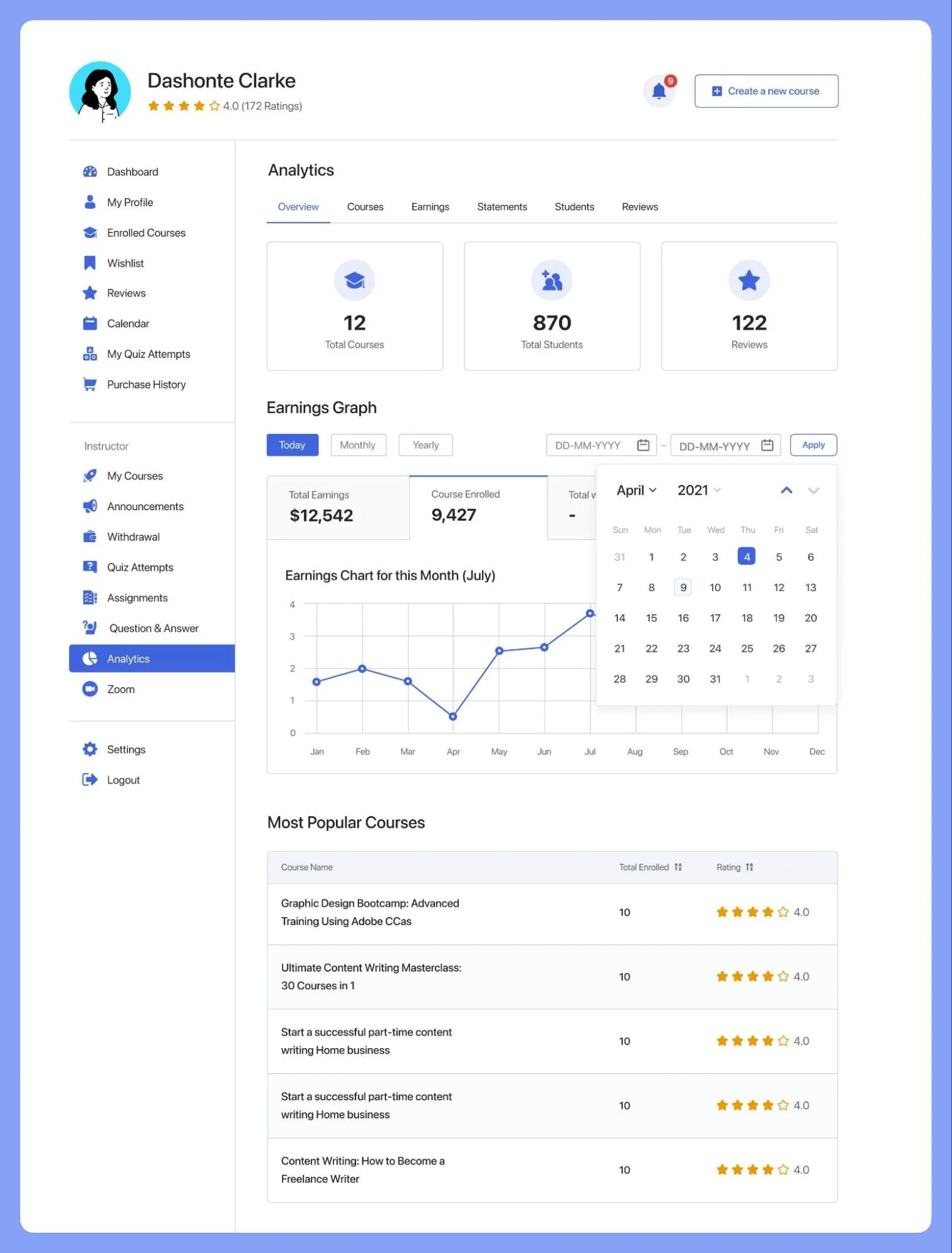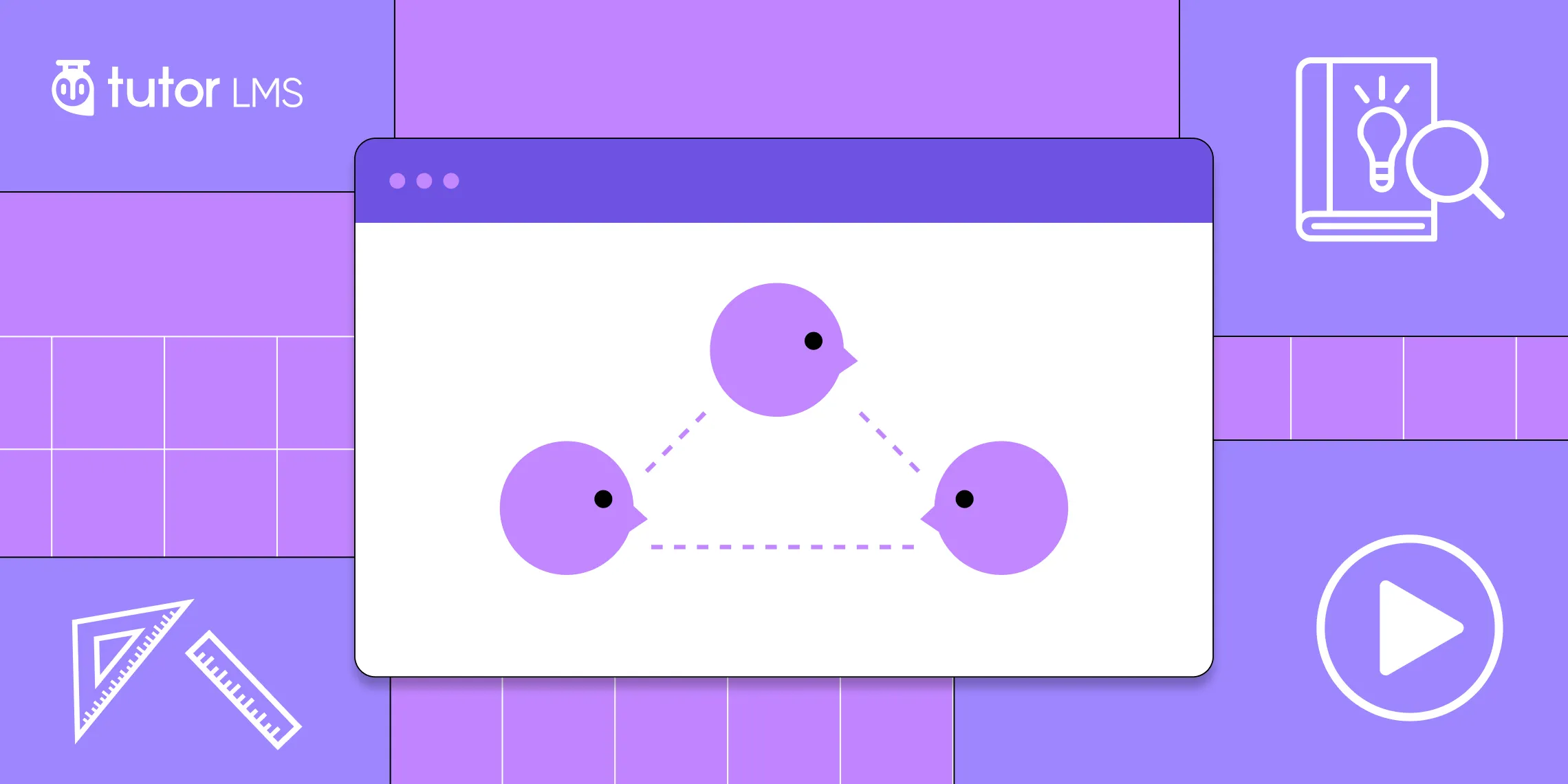The future of corporate training is undeniably online. With the power to reach a global workforce, scale rapidly, and personalize learning journeys, online training programs unlock incredible potential for employee development. But simply transferring old training methods to a digital format won’t cut it if you want to keep your employees engaged and motivated.
This comprehensive guide reveals a proven framework for designing and delivering impactful online training programs that get results. We’ll explore strategies for creating captivating content, fostering active participation, and measuring the effectiveness of your training initiatives.
1. Building Your Online Training Strategy
A well-defined strategy sets the foundation for any successful training and development initiative. It all starts with establishing clear objectives that are directly tied to your overall business goals. Think of it as a roadmap guiding your learning and development efforts toward tangible outcomes.
Define Your Objectives
Before diving into course creation, take a step back and ask yourself, “What do you want your online training to achieve?” It’s not enough to simply say, “We want to train our employees.” Instead, tie your training initiatives to specific business goals. Are you aiming to increase sales, improve customer satisfaction, or boost productivity?
By aligning your training with desired outcomes, you’ll be able to create targeted content that directly addresses your organization’s needs.
SMART Goals:
To ensure your training and development objectives are clear and actionable, use the SMART framework:
- Specific: Clearly define what you want to achieve. Steer clear of terms like “improve performance.” Instead, state precisely what skills or knowledge you want your employees to acquire.
- Measurable: Establish metrics to track progress and evaluate success. Will you measure improvements in sales figures, customer feedback scores, or completion rates?
- Achievable: Set realistic goals that are attainable within your available resources and timeframe.
- Relevant: Ensure your training objectives are aligned with your overall business strategy and contribute to achieving your broader goals.
- Time-bound: Set a deadline for achieving your objectives to create a sense of urgency and keep your training programs on track.
Let’s illustrate this with a couple of examples:
- Sales Training: “By the end of this training program, 80% of sales representatives will be able to effectively demonstrate the new product features, clearly explain their value to customers, and achieve a 10% sales increase within three months.”
- Customer Service Training: “After completing the customer service training, 90% of representatives will achieve a customer satisfaction rating of 4.5 or higher, based on post-interaction surveys.”

By crafting SMART learning objectives, you’ll not only clarify your goals but also provide a benchmark for measuring the success of your employee training and development programs.
Identify Your Audience
Now that you’ve laid the groundwork with your training strategy, let’s turn our attention to the heart of your corporate training program: your learners.
To create a successful online training program, you need to know your audience inside and out. Understanding who they are, what they know, and what motivates them is key to designing content that resonates and drives results. So, let’s explore how to tailor the training to their specific needs:
i. Get to Know Your Learners:
Start by assessing your employees’ current skill levels. Are they beginners, intermediate learners, or seasoned pros? This will help you tailor the difficulty and pace of your training to meet them where they are.
ii. Targeted Content for Maximum Impact:
One size definitely doesn’t fit all, especially when it comes to corporate training and development. Personalizing your content not only boosts engagement but also improves knowledge retention. A recent study by McKinsey found that personalized learning experiences can increase employee achievements by up to 18%.
Tailor your content to different roles, departments, or skill levels within your organization. For instance, your sales team might benefit from role-playing exercises and case studies focused on closing deals, while your customer service team might need training on communication skills and conflict resolution.
Choose Your Training Topics Wisely
With a deeper understanding of your learners, it’s time to decide what they need to learn. Selecting the right training topics is crucial for maximizing the impact of your program and ensuring it addresses the most pressing needs of your organization:
i. Uncover Hidden Opportunities:
Start by conducting a thorough needs assessment. This involves identifying the skills, knowledge, or behaviors that your employees currently lack but are essential for achieving your business goals. You can use various methods, such as:
- Surveys and questionnaires: Gather feedback from employees on their perceived skill gaps and desired training topics.
- Performance reviews: Identify areas where employees are consistently underperforming or struggling to meet expectations.
- Customer feedback: Look for patterns in customer complaints or feedback that may indicate a need for training in specific areas.
- Industry trends: Keep an eye on emerging technologies, regulations, or best practices that may require upskilling or reskilling your workforce.
ii. Focus on High-Impact Topics:
While it’s tempting to cover a wide range of topics in your employee training software, it’s often more effective to focus on a few key areas that will have the most significant impact on your business.
Consider the following factors when prioritizing training topics:
- Alignment with business goals: Choose topics that directly support your strategic objectives and key performance indicators (KPIs).
- The urgency of need: Address pressing issues that are hindering productivity or impacting customer satisfaction.
- Potential for return on investment (ROI): Invest in training that will yield tangible benefits, such as increased sales, improved efficiency, or reduced costs.
- Employee interest and engagement: Prioritize topics that resonate with your trainees and pique their curiosity.
By focusing on high-impact topics, you’ll create training programs that not only address critical needs but also generate excitement and enthusiasm among your learners.
2. Designing Engaging Learning Experiences
With a solid understanding of your audience and their needs, it’s time to bring your training to life. But simply transferring information online isn’t enough. To create effective online training, you need to craft an engaging learning experience that draws your team in, keeps them actively involved, and makes learning something they genuinely enjoy.
Crafting Compelling Content
Let’s dive into the heart of your online training program, the content itself. In this section will explore how to transform your training materials into an irresistible learning experience:
i. Think Bite-Sized, Not Overwhelming:
Microlearning is your friend here. Busy professionals don’t have hours to spare for long, drawn-out lectures. By breaking down your content into bite-sized modules, you make it easier for your team to fit learning into their busy schedules. Plus, shorter bursts of information are easier to digest and retain.
ii. Spice It Up with Multimedia:
No one wants to stare at walls of text all day. Variety is the spice of life, and it’s also the key to captivating learners. Mix things up by incorporating videos, text, quizzes, and interactive exercises elements. Tutor LMS simplifies content creation, allowing you to manage all your videos, quizzes, and interactive elements in one place, saving you time and effort.
Encouraging Active Participation & Gamification and Incentives
Okay, so we’ve covered engaging content, but what about keeping your team actively involved throughout the learning process? Well, that’s where a few clever strategies come in:
i. Hands-On Activities for Real-World Impact:
It’s one thing to absorb information, but it’s quite another to put it into practice. That’s where hands-on activities like simulations, case studies, and role-playing come into play.
They immerse your trainees in realistic scenarios, allowing them to apply their newfound knowledge, build confidence, and make better decisions on the job. Don’t just tell them how to do it, let them experience it firsthand!
ii. Fostering a Learning Community:
Learning is more effective and fun when it’s a collaborative effort. Tutor LMS fosters a sense of community through features like discussion forums and peer feedback, allowing employees to connect and learn from each other.
iii. Turning Learning into a Game:
Remember those gold stars you got in school? That sense of accomplishment and recognition can work wonders in the workplace too. Gamification adds elements of play and competition to learning, making it more enjoyable and motivating.
3. Implementing and Managing Your Online Training
Alright, you’ve laid the groundwork with your strategy, and now it’s time to bring your training program to life! This is where choosing the right Learning Management System (LMS) becomes crucial. It’s your training program’s home base, where you’ll house your content, manage learners, and track progress.
Choosing the Right LMS: Your Training Command Center
There are a lot of LMS options out there, but Tutor LMS stands out for its user-friendly interface, customization options, and robust reporting features.
It’s designed to be intuitive, even for those without technical expertise, so you can focus on creating great content, not wrestling with complex software. And with its customizable branding and course layouts, you can create a learning environment that reflects your company’s unique identity.
i. What sets Tutor LMS apart?:
- Free, yet comprehensive: If you’re just starting out or have a tight budget, Tutor offers a free version with a surprising amount of features. You can build courses, add quizzes, and track basic learner progress without spending a dime.
- Affordable Pro version: As your needs grow, Tutor LMS Pro offers advanced features like customizable certificates, content drip, prerequisites and 100+ features out of the box. And it’s still surprisingly affordable compared to many other options.

- Detailed Reporting and Analytics: Tutor provides detailed reports on learner progress, engagement, and assessment scores. This data helps you identify areas for improvement and demonstrate the impact of your training.
Of course, there are other LMS options out there, each with its own strengths. But if you’re looking for a one-stop solution at a competitive price, Tutor LMS is a great choice.
ii. Seamless Integration for a Smooth Experience
If you’re a tech-savvy user, Tutor LMS’s API flexibility allows you to integrate it with your existing systems and applications. This can streamline your workflow and automate certain tasks, like enrollment or data syncing.
Tracking and Measuring Success: The Proof is in the Data
Tutor’s reporting features make it easy to track your training program’s success. You can see who’s completing courses, how they’re scoring on assessments, and which modules are most engaging. Use this data to identify areas where your training is working well and areas where it could be improved. Don’t forget to gather qualitative feedback too.

Continuous Improvement: The Key to Long-Term Success
The most effective online training programs are constantly evolving. Regularly review learner progress, gather feedback, and update your content to ensure it remains relevant and engaging. Stay informed about the latest learning trends and technologies to keep your training program fresh and impactful.
And if you’re ready to take the next step and implement a powerful, user-friendly LMS, give Tutor LMS a try. It’s designed to make your online training journey smooth and successful, every step of the way. Happy training!
Start Using Tutor LMS Today
Ready to take your online courses to new heights? Download Tutor LMS now and enjoy a journey of eLearning excellence.
